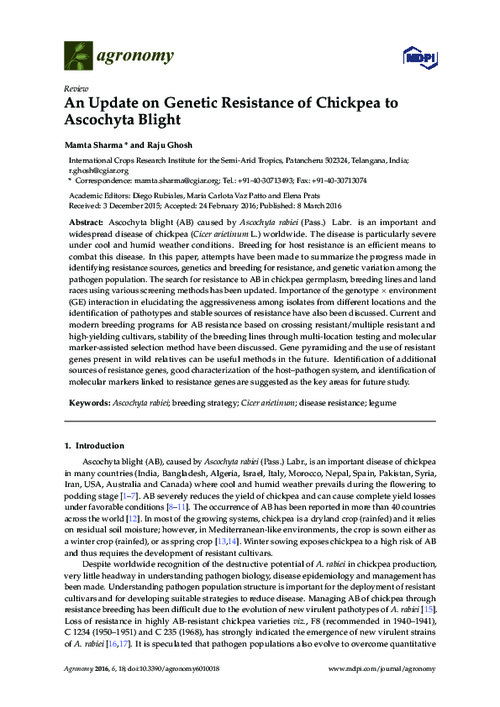An Update on Genetic Resistance of Chickpea to Ascochyta Blight
Abstract
Ascochyta blight (AB) caused by Ascochyta rabiei (Pass.) Labr. is an important and
widespread disease of chickpea (Cicer arietinum L.) worldwide. The disease is particularly severe
under cool and humid weather conditions. Breeding for host resistance is an efficient means to
combat this disease. In this paper, attempts have been made to summarize the progress made in
identifying resistance sources, genetics and breeding for resistance, and genetic variation among the
pathogen population. The search for resistance to AB in chickpea germplasm, breeding lines and land
races using various screening methods has been updated. Importance of the genotype environment
(GE) interaction in elucidating the aggressiveness among isolates from different locations and the
identification of pathotypes and stable sources of resistance have also been discussed. Current and
modern breeding programs for AB resistance based on crossing resistant/multiple resistant and
high-yielding cultivars, stability of the breeding lines through multi-location testing and molecular
marker-assisted selection method have been discussed. Gene pyramiding and the use of resistant
genes present in wild relatives can be useful methods in the future. Identification of additional
sources of resistance genes, good characterization of the host–pathogen system, and identification of
molecular markers linked to resistance genes are suggested as the key areas for future study

